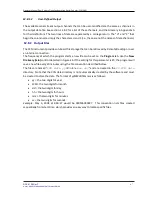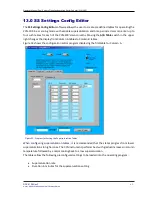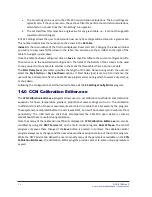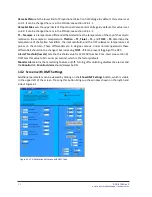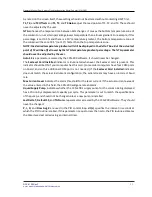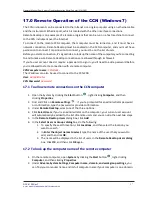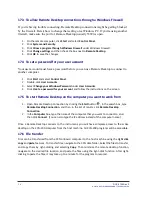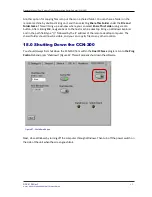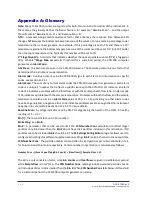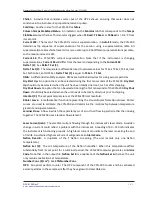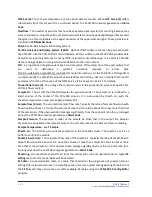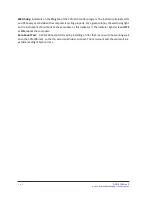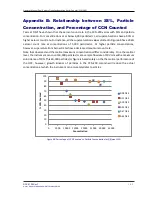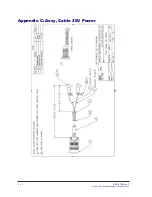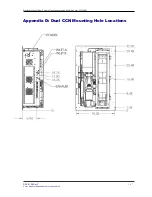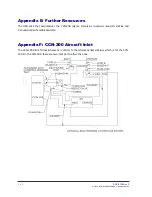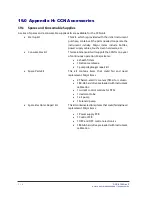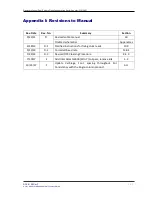
Operator Manual, Dual-Column Cloud Condensation Nuclei Counter (CCN-200)
DOC-0128 Rev F
1 0 1
© 2017 DROPLET MEASUREMENT TECHNOLOGIES
Chiller:
A device that condenses water out of the OPC exhaust, ensuring that water does not
condense in the instrument’s proportional valve or pump.
Cold trap:
Another name for the CCN-200’s
chillers.
Column Temps Stabilized Status:
An indicator on the
Monitor
tab that corresponds to the
Temps
Stabilized
output channel. This monitor triggers when
T1 Read
,
T2 Read
, or
T3 Read
is > 0.4 °C from
its set point.
Current SS#:
The level of the CCN-200’s current supersaturation. In
Auto SS
mode, the CCN-200
determines the sequence of supersaturations for the session using a supersaturation table. All
supersaturation tables start at level 0. Users can enter up to 256 different supersaturations per table,
so the maximum level is 255.
Current SS:
The CCN-200’s current supersaturation. Note that if the instrument is changing
supersaturations,
Current SS
will differ from the level corresponding to the
Current SS#
.
Delta T (C):
See
Delta T Set (C).
Delta T Set (C):
The temperature differential used to calculate values for T1 Set, T2 Set, T3 Set, Inlet
Set, Nafion Set, and OPC Set.
Delta T Set (C)
is equal to
T3 Set
–
T1 Set
.
DMA:
A differential mobility analyzer
.
DMAs are traditional devices for sizing aerosol particles.
Dry Start Up:
An option that can be selected during the first ten seconds of the CCN-200.
Dry Start
Up
should only be selected when the unit has been totally dried out, such as after shipping.
Dry Shut Down:
An option that can be selected during the first ten seconds of the CCN-200.
Dry Shut
Down
should only be selected when the unit needs to be totally dried out prior to shipping.
Inlet Set (C):
The set point temperature at the CCN-200 inlet manifold.
Köhler Curve:
A mathematical function representing the cloud-droplet formation process. Köhler
curves are used to calibrate the CCN-200 and determine the relationship between temperature
gradient and supersaturation.
Laminar Flow:
A flow in which the separate layers of air or fluid flow in parallel rather than mixing
together. The CCN-200 uses a laminar flow element.
Laser Current (mA):
The electrical current flowing through the instrument’s laser diode. A sudden
change in current could reflect a problem with the instrument. A reading of 60 – 120 mA indicates
the instrument is functioning properly. A high laser current can indicate the laser is nearing the end
of its life. A sustained high Laser Current will generate an
Alarm Code.
Nafion Read B:
A duplicate of the T Nafion A reading. (The unit records only one Nafion
temperature.)
Nafion Set (C):
The set temperature of the Nafion humidifier. When this temperature differs
substantially from its set point for a sustained period, the CCN-200 computer generates an
Alarm
Code
. Note that in the output file,
Nafion Set B
is a duplicate of the
Nafion Set A
channel; the unit
only records one Nafion Set temperature.
Number Conc. (#/cm
3
)
:
See
CCN Number Conc.
OPC:
An optical particle counter. The OPC component of the CCN-200 counts and bins activated
aerosol particles in the sample air after they have grown to detectible size.

